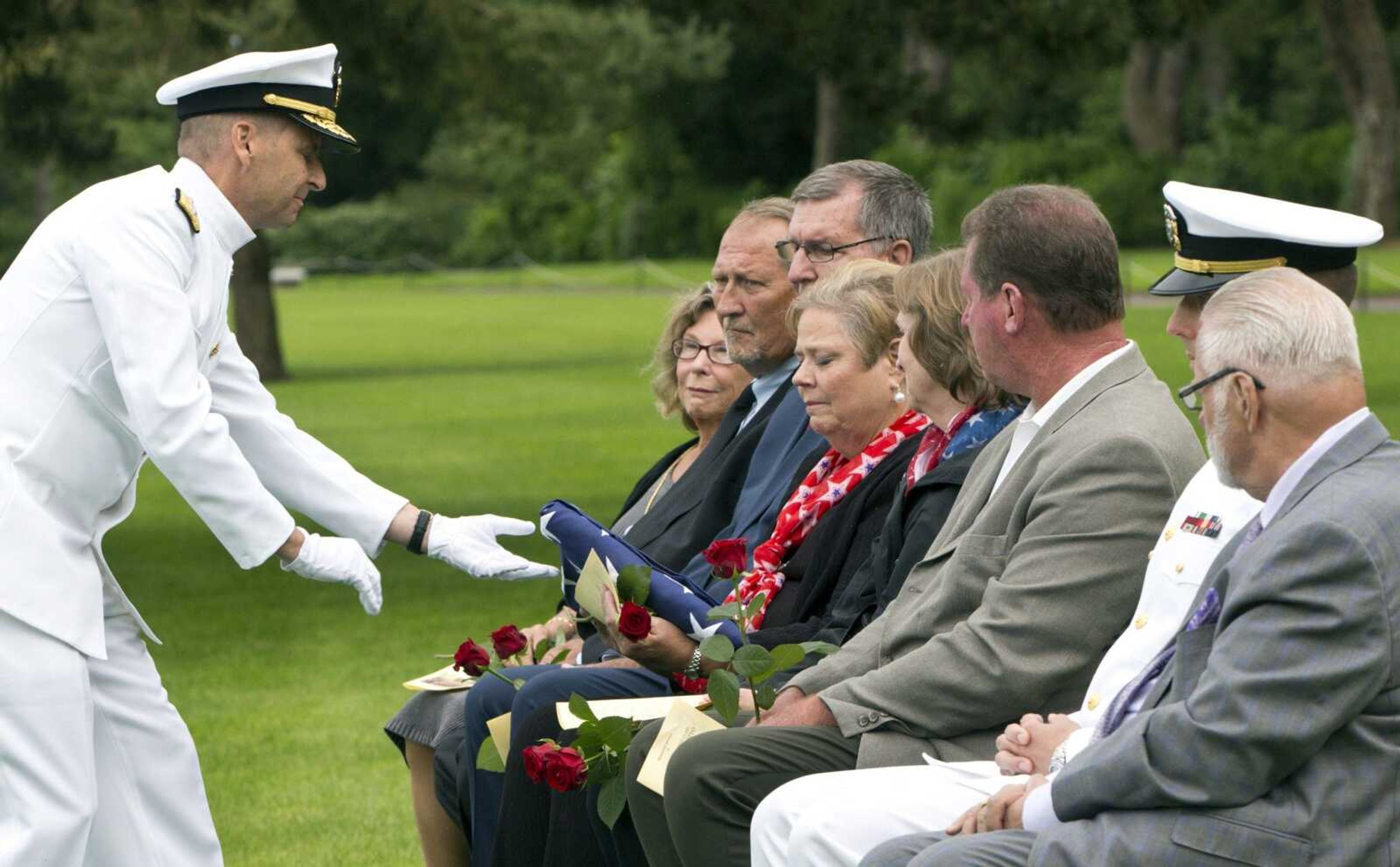Twin brothers reunited 74 years after WWII death at Normandy
COLLEVILLE-SUR-MER, France -- For decades, he was known only as Unknown X-9352 at a World War II American cemetery in Belgium where he was interred. Today, he has recovered his identity -- and was being reunited with his twin brother in Normandy, where the two Navy men died together when their ship shattered on an underwater mine while trying to reach the blood-soaked D-Day beaches...
COLLEVILLE-SUR-MER, France -- For decades, he was known only as Unknown X-9352 at a World War II American cemetery in Belgium where he was interred.
Today, he has recovered his identity -- and was being reunited with his twin brother in Normandy, where the two Navy men died together when their ship shattered on an underwater mine while trying to reach the blood-soaked D-Day beaches.
Julius Heinrich Otto "Henry" Pieper and Ludwig Julius Wilhelm "Louie" Pieper, two 19-year-olds from Esmond, South Dakota, are finally resting in peace side-by-side at the Normandy American Cemetery and Memorial in France, 74 years after their deaths June 19, 1944.
While Louie's body was soon found, identified and laid to rest, his brother's remains were only recovered in 1961 by French salvage divers and not identified until 2017.
They will be the 45th pair of brothers at the cemetery, three of them memorialized on the Walls of the Missing at the cemetery. But the Piepers will be the only set of twins among the more than 9,380 graves, according to the American Battle Monuments Commission.
Julius, radioman second class like his brother, was being buried with full military honors at the cemetery, an immaculate field of crosses and stars of David. The site overlooks the English Channel and Omaha Beach, the bloodiest of the Normandy landing beaches of Operation Overlord, the first step in breaching Hitler's stranglehold on France and Europe. Family members were in attendance.
"They are finally together again, side by side, where they should be," said their niece, Susan Lawrence, 56, of California.
"They were always together. They were the best of friends," Lawrence said. "Mom told me a story one time when one of the twins had gotten hurt on the job and the other twin had gotten hurt on the job, same day and almost the same time."
The story of how the twins died and were being reunited reflects the daily courage of troops on a mission to save the world from the Nazis and the tenacity of today's military to ensure no troop goes unaccounted for.
The Pieper twins, born of German immigrant parents, worked together for Burlington Railroad and enlisted together in the Navy. Both were radio operators and both were on the same unwieldy flat-bottom boat, Landing Ship Tank Number 523 (LST-523), making the Channel crossing from Falmouth, England, to Utah Beach 13 days after the June 6 D-Day landings.
The LST-523 mission was to deliver supplies at the Normandy beachhead and remove the wounded. It never got there.
The vessel struck an underwater mine and sank off the coast. Of the 145 Navy crew members, 117 were found perished. Survivors' accounts speak of a major storm on the Channel with pitched waves tossing the boat mercilessly before the explosion shattered the vessel.
Louie's body was laid to rest in what now is the Normandy American Cemetery. But the remains of Julius were only recovered in 1961 by French divers who found them in the vessel's radio room. He was interred as an "Unknown" at the Ardennes American Cemetery in Neuville, Belgium, also devoted to the fallen of World War II, in the region seeing the bloody Battle of the Bulge.
Julius' remains might have stayed among those of 13 other troops from the doomed LST-523 still resting unidentified at the Ardennes cemetery. But in 2017, a U.S. agency tracking missing combatants using witness accounts and DNA testing identified him.
The Pieper family asked Louie's grave in Normandy be relocated to make room for his twin brother at his side.
The last time the United States buried a servicemember who fought in World War II was in 2005, at the Ardennes American Cemetery, according to the American Battle Monuments Commission.
Connect with the Southeast Missourian Newsroom:
For corrections to this story or other insights for the editor, click here. To submit a letter to the editor, click here. To learn about the Southeast Missourian’s AI Policy, click here.









